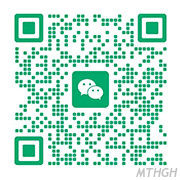What is an interactive whiteboard?
An interactive whiteboard, often called a smartboard, is an advanced display tool that can be interactively operated directly or through other devices, and is a technological advancement of the traditional whiteboard.
Whiteboards have long been used as a way for people to share information, present information, and participate in collaborative brainstorming and creative development. With the same collaborative goals, interactive whiteboards can connect to the internet and instantly digitize tasks and operations.
Interactive whiteboards combine the simplicity of whiteboards with advanced technology to facilitate dynamic presentations, collaboration, and educational presentations. They support real-time participation and can connect to the internet, enhancing their capabilities by seamlessly integrating digital tasks into group settings.
As interactive whiteboard technology has evolved, so have the capabilities and applications of these devices. They have become an indispensable tool in modern classrooms and meeting rooms.
The technology behind interactive whiteboards
While the technology used in interactive whiteboards varies greatly, there are two basic types:
Large screens. These devices are equipped with a separate system-on-chip (SOC) that manages all interactive functions independently.
Projector-based systems. Some interactive whiteboards use smart projectors or traditional projectors in conjunction with devices such as tablets to record user interactions. These systems often require specific drivers to operate effectively.
Modes of Operation of Interactive Whiteboards
Interactive whiteboards operate through a variety of technologies:
Infrared touch. Users can interact with the whiteboard through the touch of a finger or a pen recorded on an infrared grid covering the display.
Resistive or capacitive touch. Touchscreens that employ resistive touch technology react to pressure applied to the surface of the whiteboard, allowing interaction with any touching object. On the other hand, those that employ capacitive touchscreens react to the conductive touch of a human finger.
Magnetic or ultrasonic pens. Some whiteboards use specialized pens that emit ultrasonic or magnetic signals to communicate with the whiteboard.
Features and Functions of Interactive Whiteboards
Interactive whiteboards come with a range of digital tools and media features that enhance their functionality. Built-in software packages or kits often include virtual rulers, compasses, protractors, and other teaching aids that make conducting interactive lessons and presentations easier.
Examples of Interactive Whiteboards
Interactive whiteboards, such as Google's MTHGH, feature a display with which users can dynamically interact digitally.
In addition, these whiteboards support various types of media playback, allowing for dynamic teaching methods and more engaging presentations. Software integration is extensive; most interactive whiteboards come equipped with tools that can create charts, polls, graphs, and comprehensive interactive lessons.
This level of software integration greatly enhances educational and professional meeting environments by providing a versatile platform for presentations and collaboration.
Interactive Whiteboards in Various Fields
Interactive whiteboards have become an essential technology in various fields due to their versatility and interactive capabilities. They represent a major leap forward in technology integration for educational and professional environments, bridging the gap between traditional presentation methods and future technologies – providing a dynamic platform for interactive learning, collaboration, and presentations.
In the education sector, they are a must-have in classrooms around the world, providing a rich, interactive educational experience that engages students better than traditional methods. The corporate sector also benefits from the use of interactive whiteboards, particularly in boardrooms and meeting rooms, where they can enhance presentations and facilitate strategic planning sessions. This promotes better collaboration and more effective information sharing among team members.
In fields such as engineering and coaching, interactive whiteboards are extremely useful for detailed planning and training sessions, allowing complex information to be clearly communicated and interactively engaged by all attendees.
Hybrid meetings can be hampered by both technical and non-technical challenges. Learn how to solve common hybrid meeting issues to support attendees no matter how they participate.

 Your message must be between 20-3,000 characters!
Your message must be between 20-3,000 characters! Please check your E-mail!
Please check your E-mail!  Your message must be between 20-3,000 characters!
Your message must be between 20-3,000 characters! Please check your E-mail!
Please check your E-mail! 

